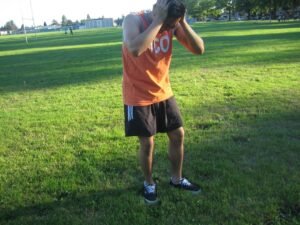Fainting or syncope is the temporary loss of consciousness. When an individual faints, he/she typically regains alertness right after becoming conscious and will not manifest involuntary movement while being unconscious. Fainting is usually caused by the temporary loss of blood supply to the brain and can indicate a serious medical condition. Individuals of all ages can faint but the elderly often have an underlying cause.
Symptoms of fainting
Always remember that unconsciousness is an evident sign of fainting.
Situational syncope

- Consciousness is regained once a particular situation has ended
Vasovagal syncope
- Prior to fainting, the individual can feel light-headed, shaky and experience blurred vision.
- Individual can see spots in front of their eyes
- You can observe that the individual has dilated pupils, sweating and pale
- While the individual is unconscious, he/she has a low pulse rate
- Consciousness is quickly regained
- There are no warning signs before a syncopal episode occurs
Cardiac syncope
- Individual complains about palpitations, shortness of breath and chest pain
- Fainting occurs without warning or any exertion
- The individual is pale, sweating and has a weak erratic pulse
Postural syncope
- Individual can experience light-headedness when standing or sitting
- Individual reports fluid loss through diarrhea, vomiting and fever and blood loss
- The individual is pale, sweating and there are signs of dehydration
Neurological syncope
- Individual has a strong pulse when unconscious and has normal skin color
- The individual can have slurred speech, headache, loss of balance, vertigo or double vision
When to seek medical care
Always remember that fainting can be considered as a serious condition. With this in mind, it is important that all fainting episodes are taken seriously and an individual who experiences a first fainting episode must be checked by a healthcare professional right away. If the individual has a history of fainting and has a specific diagnosis, it might be relayed to the healthcare professional that he/she experienced another episode of fainting
On the other hand, majority of individuals who have a history of situational, vasovagal or postural causes of fainting do not need hospitalization, many doctors prefer to have any individual who experiences fainting to be evaluated by a healthcare professional.
Treatment for fainting
If possible, the first aid measure for an individual who has fainted to the ground is to minimize further injury. In case the individual is already unconscious, you have to stimulate him/her in a vigorous manner by briskly tapping or speaking in a loud voice. If the individual does not respond, you have to call for emergency assistance right away.
Always check if pulse and breathing is present and perform CPR if needed. Once the individual recovers, instruct him/her to lie down until the medical team arrives. Take note that even if you believe that the cause of fainting is harmless, always allow the individual to lie down for 15-20 minutes before attempting to stand up again. Do not forget to ask regarding any persistent symptoms such as back pain, headache, and shortness of breath, chest pain, weakness, abdominal pain or loss of function. Remember that these can indicate a life-threatening cause of the fainting episode.
